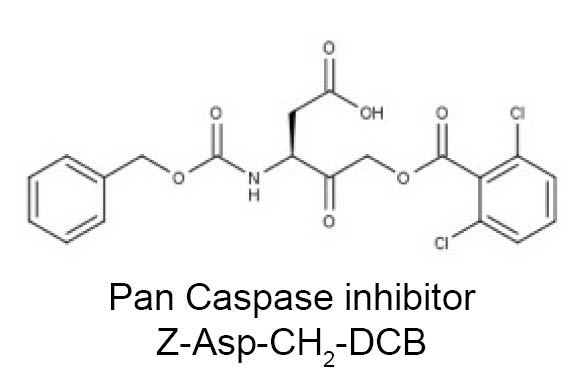In a previous post, I discussed Caspases as pharmaceutical targets – how to screen for inhibitors?
Today I would like to concentrate on Caspase inhibitors/modulators, which allow for in-depth characterisation of your enzyme of interest and which can serve as reference compounds in caspase inhibitor screenings. A short recap: Caspases (Cysteine-dependent aspartate-directed proteases) belong to the family of cysteine proteases and are involved in networks controlling cell death (apoptosis and necrosis) and inflammation. Amongst the 12 known human caspases, 5 have been described as playing a crucial role in apoptosis (Caspase-3, -6, -7, -8, and -9), 4 have been linked to processes in inflammation (Caspase-1, -4, -5, and -12), and 3 (Caspase-2, -10, and -14) could not yet be exactly classified concerning their functions.
Selective Caspase modulators and inhibitors
A number of caspase modulators (often small peptides which inhibit caspases in a competitive manner) are specific for certain caspases. Thus they can be used, for example, to selectively shut down a caspase and the downstream impact of this inhibition on the pathway the caspase of interest is involved in.

Specific modulators are available for:
Multi- and Pan-Caspase modulators and inhibitors
Another set of modulators impacts the activity of either a set of caspases (multi-caspase modulators) or all known caspases (pan-caspase modulators).
You can choose among the following options:
If you need further information about the variety of available modulators, inhibitors, activators… of caspases or any other enzyme class, get in touch with me through the form below.
P.S.: You might be interested in this post which is about a set of compounds allowing you to differentiate between the diverse modes of programmed cell death: Apoptosis, Autophagy, Necroptosis, and Ferroptosis.




